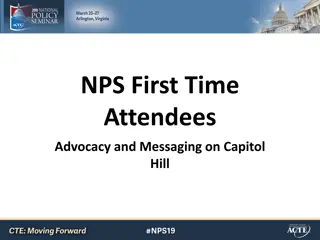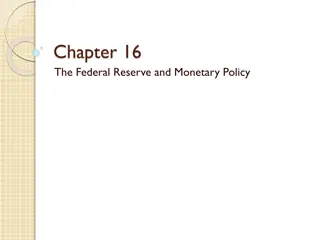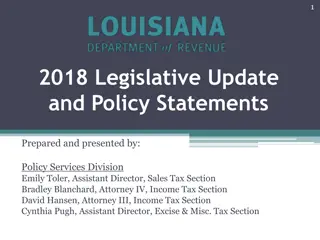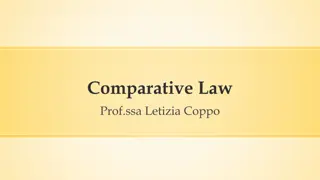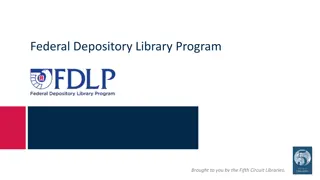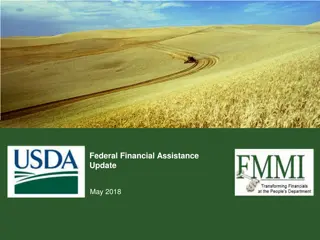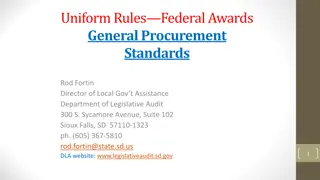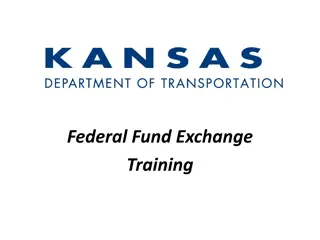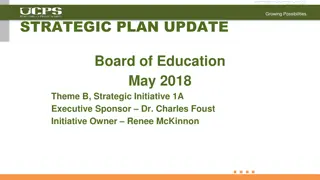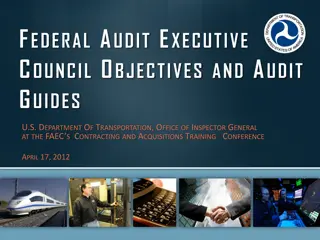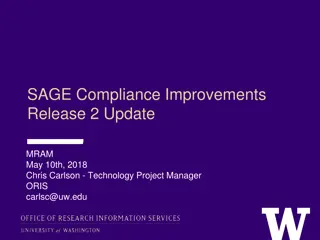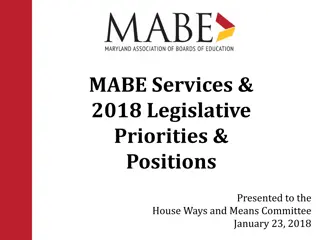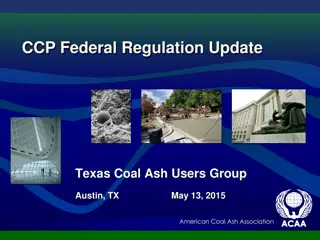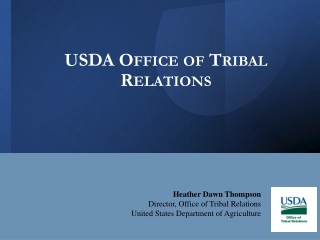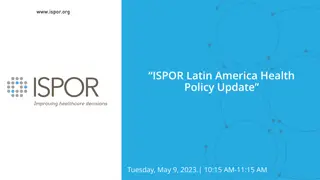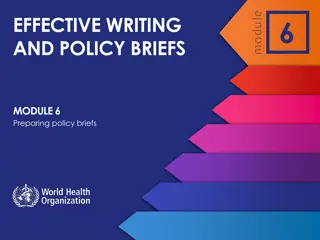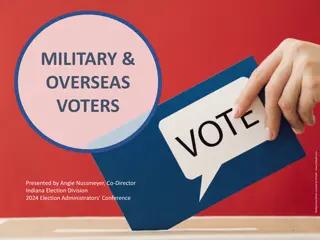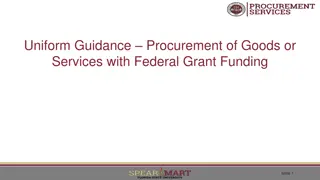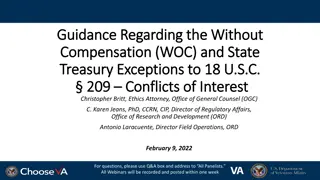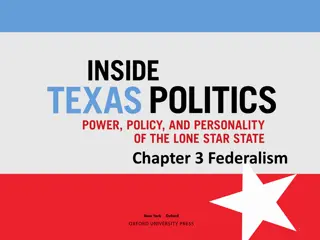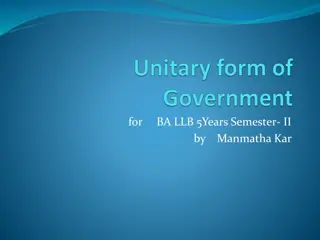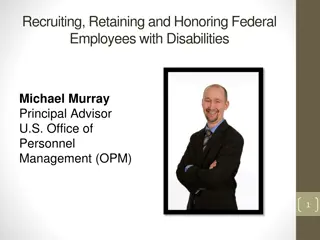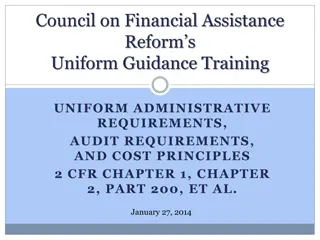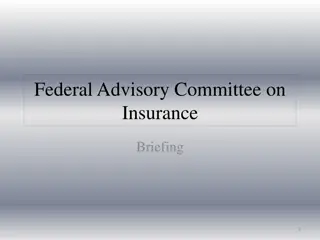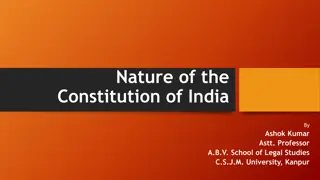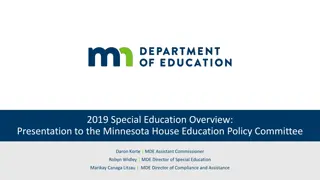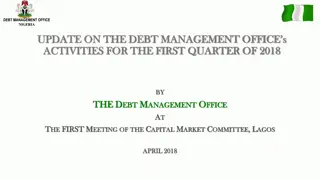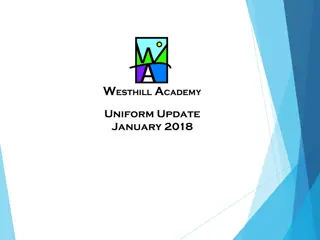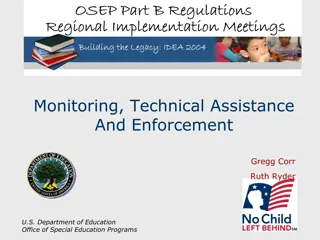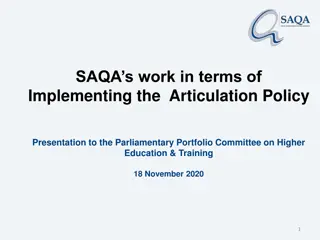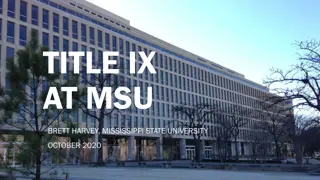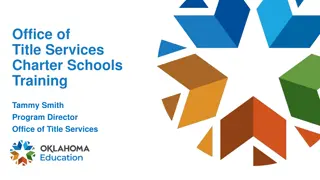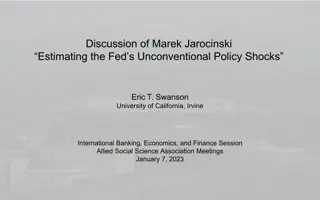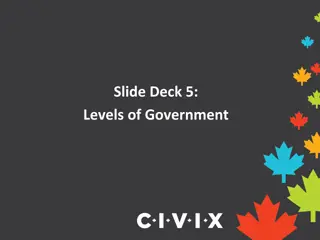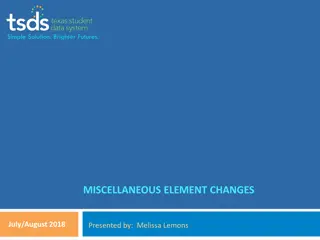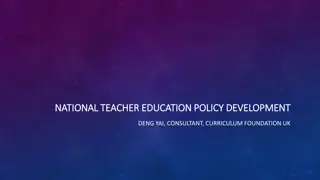Federal Education Policy Update - May 1, 2018
This update covers the FY17 funding package, FY18 Trump budget proposal, final FY18 deal, rescission threats, and the FY19 budget proposal in relation to federal education policy. Various aspects such as funding allocations, cuts, and proposals are discussed, highlighting the potential impacts on education programs and initiatives.
Download Presentation

Please find below an Image/Link to download the presentation.
The content on the website is provided AS IS for your information and personal use only. It may not be sold, licensed, or shared on other websites without obtaining consent from the author. Download presentation by click this link. If you encounter any issues during the download, it is possible that the publisher has removed the file from their server.
E N D
Presentation Transcript
FEDERAL EDUCATION POLICY UPDATE May 1, 2018 PAFPC Leslie Finnan Senior Legislative Analyst, AASA: The School Superintendents Association
OVERVIEW Funding Taxes Higher Education Vouchers DACA Other Issues Questions
FY17 FUNDING PACKAGE $68.2 b for USED at base level, but when we account or $1.3 b rescission to Pell, the level is $66.9($1.1 below FY16) ESSA Title I increased by $550 m ($450m from SIG), still short at LEA level Title II cut by $294m (13%) to $2.1 billion Title IV funded at $400 m (revert to competitive?) Other IDEA receives $90 m increase (still at just 16% of federal share) Impact Aid up $23m to $1.3b 21stCentury up $25 m Charter Schools up $9m Head Start up $85 m Includes reauth of DC voucher program
FY18 TRUMP BUDGET PROPOSAL FY18 Priority: Very real deep cuts. Parity between defense/non-defense discretionary $54b increase for defense discretionary; paid for with $54 b cut to NDD $9 b (13%) cut to USED $1.4 b increase for school choice/privatization $1b for Title I portability; $250 m for vouchers; $168 m for charters Cuts IDEA and Title I local allocations, as well as Carl D Perkins (Career/Tech) Eliminates Title IIA, Title IV and 21stCentury Community Learning grants Eliminate 20 other categorical grants
FINAL FY18 DEAL Final budget deal raised caps ($80 b for DD, $63 b for NDD) $1.3 trillion, with $579 for NDD overall $3.9 b increase to USED (to $70.9 b) If USED FY12 allocation ($68.1 b) kept pace with inflation, it would be $74.8 b in 2018 constant dollars Rejects new choice proposals (does fund DC vouchers) Head Start up $610m ESSA Title I up $300 m, Title II level funded, Title IV up $700 m to $1b $275 m increase for IDEA state grants $75 m increase for Perkins $3 b increase for programs to respond to opioid crisis Impact Aid increase of $86 m First year of funding for SRS since 2015
RESCISSION THREATS Because of a little-known law, President Trump can rescind specific elements of the funding bill he signed (with Congressional approval) The Administration will likely release a $60 billion rescission package in the next few weeks Likely to include significant education cuts Not likely to pass the Senate McConnell has expressed concern
FY19 BUDGET PROPOSAL President released his FY19 budget proposal on Feb 12 $63.2 b to USED, a cut of $3.6 b/5%) Continues prioritization of privatization Budget proposal was modified to reflect cap increases, but those additional dollars went largely to doubling the amount available for choice (from $500 m to $1 b) Eliminates: Title II, Title IV, 21stCentury, Teacher Incentive Grants, Comprehensive Lit Grants, Forest Counties Cuts: Impact Aid, Medicaid, SNAP Freezes Title I, nominal increase to IDEA, freeze REAP, small increase to Perkins, cut to program that would support opioid abuse prevention
TAX REFORM WHY WE CARE SALT-D reduction of the state and local tax deduction This could tie the hands of districts to raise local taxes, because that money would be double-taxed by the local district and the federal government Would most definitely lead to lower education spending at the local level especially in a high-tax state like New York Vouchers expansion of 529 plans Expands 529 college savings plans to be used for K-12 private schools as well Most state tax legislation echoes federal legislation, so this would expand state 529s as well Qualified Zone Academy Bond (QZABs) Repeals tax-exempt status for bonds, thus increasing the interest rates available to school districts and the long-term costs $1.5 trillion added to deficit Will pressure Congress to make cuts elsewhere, may trigger more across- the-board sequester cuts
FEDERAL STUDENT LOAN FORGIVENESS/GRANT PROGRAMS Public Service Loan Forgiveness If a teacher makes 10 years of on-time income-based payments, the remainder of the loans are forgiven Teacher Loan Forgiveness If a teacher works in a low-income school for five years, he/she can have up to $17,500 (math, science, or special education) or $5,000 forgiven Perkins Loan Cancellation Forgives federal Perkins loans for teachers for each year spent teaching at a low-income school or ESA or a high-needs subject area TEACH Grants Up to $4,000 per year given to college students who have an expressed interest in teaching in a low-income school. The graduate must teach at least four of the eight years following graduation in a low-income school or ESA
HIGHER EDUCATION ACT REAUTHORIZATION, HOUSE The House committee passed partisan (GOP) bill the PROSPER Act Eliminates all of Title II teacher preparation programs Eliminates TEACH Grants Eliminates public service loan forgiveness Creates one loan, one work-study, two repayment plans framework Teachers would have the same options as every other graduate Looking for time on the floor Chairwoman Foxx actively whipping votes
HIGHER EDUCATION ACT REAUTHORIZATION, SENATE Senator Alexander was insistent on a bipartisan, comprehensive bill Has not released anything beyond rumors His priorities are FAFSA simplification, repealing Obama-era regulations Senator Murray is too concerned about ESSA implementation to pursue a comprehensive reauthorization Her priorities are affordability and accountability What s next? Partisan (GOP) bill may be released, dead on arrival Smaller bills may be released, probably also dead on arrival
IMPACT AID VOUCHER PROPOSAL What is happening? Republicans recently introduced the Military Education Savings Accounts Act (HR 5199 / S. 2517) Creates a private school voucher program for students with an active-duty parent in the military Will likely be attached to National Defense Authorization Act in the next few weeks The program will drain dollars from the Impact Aid program. Instead, a few military- connected students will be eligible for a $2500 voucher that they can use at a private school, online school, summer camp, afterschool programs or for homeschooling. Impact Aid school districts could lose up to $450 million dollars or 39% of the total funding for the program What can we do? Contact your Members of Congress now! http://www.aasa.org/legislative-action-center/#/
DACA President Trump ended the DACA program Gave Congress six months to come up with an alternative they didn t Impacts about 250,000 students AASA opposes this change Resources posted to our blog http://aasa.org/policy-blogs.aspx?id=40802&blogid=84002 Advice to schools: Know your rights ICE agents are not allowed on school grounds Do not collect information you do not want to share especially immigration status of students or parents
WHERE IS DACA NOW? In February, in exchange for Senator Flake s vote on the tax bill, Congress voted on four different immigration bills They ALL failed It was suggested that DACA be included in the March appropriations bill It was not Courts have ruled that President Trump cannot end the program, so current recipients are in limbo It is very unlikely anything will happen outside the courts this year
HEALTHCARE Medicaid: House bill (AHCA) and Senate bills (first BCRA, then Graham-Cassidy) would change the way Medicaid is funded Would create block grant to states allowing states to decide which institutions to reimburse Would also lead to lower funding levels CHIP: Provides health insurance for low-income children not covered by Medicaid Many students on CHIP receive health care in schools as a part of the Medicaid program Funding expired in October was finally reauthorized after over 100 unfunded days as part of the shutdown negotiations
PERKINS CTE 114th Congress House passed bipartisan legislation in July 405-5 to reauthorize Perkins, Senate didn t take action 115th Congress In June, the House passed a very similar bill There is much to like in the bill Addresses the onerous administrative requirements for Perkins funding Addresses paperwork burden by allowing districts to fill out a simple, easy-to- complete local application Streamlines the accountability system and aligns performance measures with those set by each state under ESSA
SCHOOL NUTRITION 114th Congress House and Senate introduced bills last year, did not make it out of Committee 115th Congress Attention in the Senate to be on the Farm Bill instead this year USDA Actions Secretary Purdue signed proclamation ordering flexibilities Essentially status quo Holding sodium limits at Target I Allows for waiver of whole grain requirement to 50% Allows 1% flavored milk to be served Also recommending some flexibility for hiring, especially in rural areas
FARM BILL Last week, the House Agriculture Committee passed (26-20) a bill to reauthorize the Farm Bill, which includes SNAP (formerly Food Stamps) The bill increases work requirements for SNAP recipients Could cause more than 1 million low-income households with about 2 million people to lose their benefits altogether or have them reduced particularly low-income working families with children Narrows categorical eligibility lowering eligibility for SNAP Directly impacts schools using categorical eligibility to enroll students in lunch and breakfast programs
EARLY LEARNING Child care as a Trump (family) priority Democrats released a comprehensive bill last month Provides financial incentives to states to beef up their programs for 3 and 4 year-olds in high-quality preschools Increases workforce training and compensation Broader support for Head Start Child care tax credit increased in tax proposal does not necessarily lead to quality Goes primarily to higher income households
AASA LEGISLATIVE AGENDA ESSA Student Data & Privacy School Nutrition Charters Perkins Career/Tech Higher Education Act IDEA Early Education Rural Education (REAP, Forest Counties, Impact Aid) Affordable Care Act Regulations: DoL and EPA School Vouchers Immigration / DACA E-Rate/Lifeline/EBS More?
AASA POLICY & ADVOCACY TEAM Noelle Ellerson Ng nellerson@aasa.org @noellerson Sasha Pudelski spudelski@aasa.org @spudelski Leslie Finnan lfinnan@aasa.org @LeslieFinnan


